7 Eco-Friendly & Non-Toxic Cribs To Make Your Baby’s Bedtime Better
Rocking chair, check. Changing table (stocked with eco-friendly diapers), check. Adoooorablee little socks and onesies, check.
Non-toxic crib, umm…
If you’ve been spending some of your ~40 weeks searching for organic baby products and baby eco trends, cribs were hopefully on the top of your list.
Especially considering conventional cribs are known to play host to toxic chemicals that may be linked to future health complications, or even SIDS.
If you did, we’re here to help by uncovering some of the best eco-friendly crib brands to help babies (and you) get a good night (or hour, at least) of sleep.
Everything we recommend to you on Sustainable Jungle is independently researched and we ask all brands to confirm their claims. To avoid waste, we test products on an as needed basis. This post contains affiliate links. If you buy something through our links, we may earn a small commission. Learn more about why we do this here.
Tuck Your Tot Into The Best Non-Toxic Cribs
Exceeding CPSC and ASTM safety standards, Nestig caters to your child’s entire nesting period. Their non-toxic convertible cribs grow from a mini crib, to a full crib, and eventually a toddler bed.
Cradlewise‘ JPMA and GREENGUARD certified all-in-one sustainable crib, bassinet, and monitor is the smartest crib tracking temperature to sleeping patterns.
But what are non-toxic cribs?
Put yourself down for a nap by jumping down to the end of the article to find out.
The Full List Of Eco-Friendly & Non-Toxic Baby Cribs
- Babyletto | Visit Store
- dadada | Visit Store
- Nestig | Visit Store
- Little Seeds | Visit Store
- West Elm | Visit Store
- bloom | Visit Store
- Cradlewise | Visit Store
- Non-toxic crib accessories | Visit Store
1. Babyletto
About Babyletto
Price Range: $230–$700
Babyletto was founded to provide eco-friendly, affordable, and safe products for modern families.
As a member of Million Dollar Baby Co. brands, they’re award-winning and well-loved by families around the globe—most notably offering an affordable eco-friendly crib.
Choose between several different styles and colors or mini cribs and convertible eco-friendly cribs, which grow from crib to toddler bed to daybed to full-sized twin bed.
Most are 3-in-1 or 4-in-1 convertible cribs, but the Yuzu stands out with eight (!) different convertible forms that include a bassinet and mini non-toxic travel crib.
Babyletto’s Ethical & Sustainability Practices
Materials:
Babyletto’s non-toxic materials are impressive: sustainable New Zealand pine wood, finishes free of lead and phthalates (with undetectable levels of formaldehyde), and CARB II compliant medium density fiberboard (MDF).
Most of these solid wood cribs are made with 100% solid pine wood, though some have a Poplar hardwood or Walnut veneer. Only the mini cribs use MDF as a mattress support board.
Tested for over 10,000 toxic chemicals and VOCs, all meet CPSC and ASTM regulations, as well as Babyletto’s own rigorous and above-industry standard quality control program, putting them well ahead of industry standards.
They’re all GREENGUARD Gold certified cribs.
Supply chain & labor practices:
Babyletto cribs are manufactured in China, Vietnam, and Taiwan.
Carbon commitments & green practices:
Your little cherub will be not-so-little before you know it. Good thing these GrREENGUARD cribs feature a convertible design, meaning fewer purchases for your quickly-growing infant or toddler.
They further extend product life with available replacement parts and non-toxic crib paint touch-up pens.
Their factory is equipped with solar panels, electric vehicle charging stations, and recycling programs. They use recycled cardboard packaging, too.
2. dadada
About dadada
Price Range: $450–$800
dadada offers a line of non-toxic nursery furniture inspired by generations of fine furniture makers.
They want to provide a sense of luxury and safety—even in the middle of a 2am half-asleep feeding. They also want to preserve the earth’s precious resources.
Their products include some of the best eco-friendly cribs with a day or toddler bed conversion kit (sold separately) and two-year warranty.
Incorporating sleek, modern style with a classic natural crib build, the Austin 3-in-1 crib allows you to adjust the mattress into three different positions to match your little one’s stage of life.
dadada’s Ethical & Sustainability Practices
Materials:
Dadada sells some of the best solid wood cribs with a non-toxic finish.
This means sustainably sourced solid beech wood and lead-free and phthalate-free finishes.
These GREENGUARD cribs are certified Gold-tier and also meet or exceed strict JPMA and Bureau Verita standards.
Supply chain & labor practices:
All cribs are produced in Italy (where labor laws are strict), at a factory with nearly a century of experience in furniture craftsmanship.
Carbon commitments & green practices:
Materials for these sustainable cribs are chosen for their durability so that they’re able to withstand decades of use, even after your kids have outgrown the toddler bed.
3. Nestig
About Nestig
Price Range: $529–$749
Nestig was founded with a desire to bring more kindness and magic—and less worry—to the world of parenting.
Founders Sara and Gui are committed to making the safest and most sustainable cribs.
They offer a few different styles, including innovative non-toxic convertible cribs. With the included conversion kit, all cribs can convert from a mini crib to a full crib and then to a junor or toddler bed.
If you’re looking for an affordable eco-friendly crib, the Mountain Crib excludes the mini crib option but still includes a full crib that converts into a toddler bed.
Nestig’s Ethical & Sustainability Practices
Materials:
Nestig’s cribs are made with sustainably harvested wood and non-toxic crib paint or finishes.
They are annually tested and show 10 ppm of toxic materials, like Babyletto. For reference, a score under 300 ppm for paint is considered safe and under 90 ppm allows a company to legally claim low toxicity.
Each toxic-free crib exceeds CPSC and ASTM safety standards and are certified by the Juvenile Product Manufacturers Association (JPMA).
Supply chain & labor practices:
Nestig products are made in a family-owned Brazilian factory. Workers are treated fairly and safety and sustainability are top priorities.
Carbon commitments & green practices:
Instead of huge runs like traditional retailers, they make just the right amount, which they refer to as a “no-inventory” business model. This reduces all overstock product waste.
They’re working to make improvements to all packaging, but currently, the shipping boxes can be recycled.
4. Little Seeds
About Little Seeds
Price Range: $320–$450
Little Seeds is putting high-quality children’s products in more homes.
Made to grow with children—not to be replaced—the non-toxic baby furniture range includes changing tables that can become dressers and cribs that transform into beds.
Best of all, their entire range of eco-friendly cribs under $500 means more conscious parenting is more accessible to a range of budgets.
Little Seeds’ Ethical & Sustainability Practices
Materials:
Unlike many of these organic wood crib brands, Little Seeds uses powder-coated metal for most of their non-toxic cribs, though you will find some solid wood cribs, too.
All either meet or exceed the SPSIA Juvenile testing requirements and ASTM and CPSC safety standards.
Supply chain & labor practices:
They’re one of several non-toxic crib brands to manufacture in Vietnam, though we’d love to learn more about their practices. We’ve reached out but haven’t received a reply.
Carbon commitments & green practices:
Replacement parts can be ordered to keep malfunctioning cribs in use.
Community & charitable giving:
Encouraging sustainability for kids through a partnership with KidsGardening, Little Seeds created the Pollinator Pals Grant, which provides education and resources to construct pollinator habitats that support monarch butterfly populations.
5. West Elm
About West Elm
Price Range: $299–$1,299
West Elm is working on expanding their use of safe and natural materials and practices that minimize waste, whether we’re talking non-toxic baby furniture or eco-friendly furniture for adults!)
Expecting parents have a lot on their hands, so this Pottery Barn-family brand makes it easy to find the best non-toxic cribs for your family.
You can search by criteria to find sustainably sourced, fair trade, and GREENGUARD Gold certified cribs.
They offer a large range of cribs from various brands (inducing Babyletto). You’ll find some modern, some that convert into a toddler bed, some with crib matresses, and all perfect for a growing family.
West Elm’s Ethical & Sustainability Practices
Materials:
The cribs are made with a range of sustainable forestry certified solid wood (poplar, eucalyptus, rubberwood, and ash), which is covered in non-toxic, water-based finishes and child-safe paints.
Others feature a lead-free powder coated iron body.
Some are made with engineered wood (plywood). Since plywood typically contains VOC-containing adhesives, be sure to look for engineered wood products that are certified to contain low levels of toxic chemicals and VOCs.
Many are GREENGUARD gold certified.
Supply chain & labor practices:
West Elm’s supply chain network is vast, but some cribs are produced in Fair Trade Certified facilities. Again, the filter function can narrow down the results for you.
They pay extra into Fair Trade community development funds.
West Elm is also pushing to bring manufacturing back to the US, where 65% of their line is currently made.
Most cribs are made in Taiwan, Vietnam, or Indonesia, but for an eco-friendly crib made in the USA, check out the Studio Duc Indi Crib.
Carbon commitments & green practices:
Wherever possible, West Elm supports a sustainability initiative. Currently, 65% of their product line meets some form of sustainable or ethical criteria.
These include those that support local economies, handcrafting traditions, Fair Trade manufacturing, or sustainable materials.
With the addition of their “sustainably sourced” collection, they’ve significantly increased their amount of organic and FSC-certified products.
West Elm is a big participant in the Better Cotton Initiative, training thousands of farmers each year in more sustainable cotton farming practices. You’ll find BCI cotton in products such as their organic curtains.
Community & charitable giving:
Organizations like the Human Rights Campaign, ASPCA, and St. Jude’s Children’s Research Hospital regularly receive support from West Elm.
They’ve donated over $50 million dollars in 15+ years.
6. bloom
Price Range: $529–$899
bloom was founded by four dads who wanted to bring together traditional products with modern design.
In addition to high chairs and bouncers, their one Alma style comes in four sizes—suitable for newborns up to kiddos who are five years old.
To keep costs down, you can bundle and save, getting an eco-friendly baby crib with a mattress, organic fitted sheets, and a waterproof mattress protector.
bloom’s Ethical & Sustainability Practices
Materials:
Sustainable slumber for your little one is courtesy of solid American birchwood from sustainable forests. It has fixtures made from commercial-grade stainless steel.
Treated with low-VOC finishes, these are lead, BPA, phthalate, PVC, MDF, and formaldehyde-free cribs.
They’re also CPSIA and ASTM compliant and have a mere 10 ppm (parts per million) toxicity score.
Supply chain & labor practices:
The cribs are made in Vietnam and Europe and provided us with their Vietnamese worker welfare declaration.
Carbon commitments & green practices:
bloom offers spare parts for all of their nursery products and baby gear.
If the crib ever does become unusable, bloom is careful to choose only compostable or recyclable materials, so each piece can still be responsibly disposed of. They’re basically helping you raise a zero waste baby!
7. Non-Toxic Crib Accessories
Now that you have the crib, don’t forget the non-toxic crib sheets and crib mattresses.
Many of these cribs come with an integrated mattress already, but if not, be sure to narrow your search to organic baby mattresses.
For sheets, no one does sustainable bedding better than Naturepedic. Their non-toxic crib sheets are made from 100% GOTS-certified organic cotton.
Coyuchi also has cozy organic cotton crib sheets ideal for baby’s sensitive skin and printed with non-toxic pigments.
Burt’s Bees Baby’s 100% GOTS-certified organic cotton crib sheets are available in a few different (and adorable) prints.
The latter two brands also offer organic baby blankets for extra crib coziness.
8. Cradlewise
About Cradlewise
Price Range: $1,400–$2,000
Of all GREENGUARD certified crib brands, Cradlewise is surely the smartest.
They aim to bring some wisdom to the cradle with one of Time Magazine’s best inventions of 2020.
Where “sensing meets soothing”, this all-in-one smart non-toxic crib, convertible bassinet, and baby monitor senses and learns your baby’s sleep patterns, automatically bouncing to help them fall asleep and stopping once they are—all “quiet as a whisper”.
A connected app tracks your baby’s sleep patterns, notifies you of any disturbances, and includes a live video monitor feed.
It also features a room temperature sensor and built-in noise machine with different levels of ambient noise, with the ability to add your own tracks, like your voice reading books to your baby.
If you’re not certain if a smart sustainable crib is for you, they offer a 100-night free trial.
Cradlewise’s Ethical & Sustainability Practices
Materials:
The included crib mattresses are natural coconut coir and Dunlop latex (VOC & PU foam free) with a natural cotton cover.
The sides are made of washable mesh, but we’re not certain if this mesh is made of sustainable fabric.
They’re also not clear on what type of solid wood the frame is made from, so we’ll touch base.
Being a JPMA and GREENGUARD certified crib, we do know the whole product is free from BPA, phthalates, VOCs, and 10,000+ other toxic chemicals.
To minimize exposure to harmful EMF, the Wi-Fi module is located as far from the baby as possible and electronic components are Federal Communications Commission (FCC) certified.
Supply chain & labor practices:
There is no manufacturing information available on Cradlewise’s website, so we will be reaching out to learn where and how these eco baby cribs are made.
Carbon commitments & green practices:
We will also reach out regarding any special measures taken toward more sustainable operations.
Because this crib is highly tech-dependent, we would especially love to see elements of sustainable technology incorporated by the brand, such as repair and recycling measures.
Community & charitable giving:
Cradlewise provides discounts for everyday heroes, such as military, medical professionals, and educators.
Did you know we Have a Newsletter?
We cover the latest in sustainable living, fashion, zero waste, beauty, travel, finance and more…
What Is A Non-Toxic Crib & Why Buy One?
When it comes to baby cribs, eco-friendly should be the default.
But in order to know what constitutes non-toxic, organic cribs (along with organic crib mattresses), we should first ask: what is a toxic crib?
Most conventional cribs use solvent-based paint (as opposed to water-based paint) for its durability. The problem is that these organic solvents are the main source of VOCs, which can offgas and degrade indoor air quality.
VOCs are in everything, from caulk and adhesives to furniture and rugs—hence why non-toxic rugs are so important—and can cause major health problems such as childhood asthma and even cancer.
VOCs aside, there are lots of other chemicals in paint, like lead. While lead paint was Banned in the United States in 1978, it’s important to note this was only high concretions of it. Lead is still allowed in concentrations less than 0.009 percent.
More concerning still is formaldehyde, which is a primary chemical in paint that is highly toxic and yet has somewhat lax emissions standards.
Aside from being used as an embalming agent (red flag), formaldehyde has been linked to reproductive issues, but the longstanding effects of exposure are largely unknown—which is more concerning still. It is thought to affect children more than adults.
Even if your crib isn’t painted, it might be made of plywood or some other engineered wood, which typically also uses those VOC-containing adhesives and formaldehyde.
Looking for untreated, natural wood and solid wood is one way to help, but various safety standards also ensure you’re getting a chemical-free crib.
There are a few safety standards and certifying bodies to be aware of:
- American Society for Testing and Materials (ASTM): The ASTM standard establishes requirements and procedures to determine the structural integrity of cribs. It contains design requirements addressing potential issues, like entanglement on crib corners.
- Juvenile Product Manufacturers Association (JPMA): Built on ASTM standards and essentially means the same.
- Consumer Product Safety Commission (CPSC): In the U.S., there are additional requirements regarding things like lead and phthalate content limits, many of which are based on the Consumer Product Safety Improvement Act of 2008 (CPSIA). This requires third-party testing to ensure that baby products have legal limits of lead and phthalates.
- UL GREENGUARD Gold Certification: Indicates that products emit low, low levels of formaldehyde emissions—lower than those that have just a GREENGUARD Certification.
- MADE SAFE: Indicates products are free from 6,500 ingredients suspected or known to harm human health.
- SOR/2016-152: Used to ensure safety for eco-friendly cribs in Canada.
California Air Resources Board (CARB) II: Ensures that formaldehyde emissions are low in products that use MDF (medium-density fiberboard, or plywood).
How We Found The Top Eco-Friendly Cribs
We can’t account for all types of tossing and turning, our sustainable and ethical fashion considerations help promote sound sleeping when it comes to safety.
We know, non-toxic baby cribs and non-toxic bassinets aren’t exactly the same as sustainable baby clothes, but the things that make them safe and healthy (for baby and the planet) are similar.
Materials:
Much like our considerations of eco-friendly bed frames, we look at the materials to determine how safe (and sustainable) something is.
If opting for solid wood non-toxic cribs, we want to see certifications ensuring that it’s been sourced sustainably.
A natural, solid wood crib is better than any made of composite wood or engineered wood, as the adhesives holding the layers together can contain toxic chemicals.
We prefer unfinished wooden cribs or natural color cribs, as these mean no harmful paint. But if you’re opting for one with crib paint, non-toxic is non-negotiable. Non-toxic paint for cribs should be free of lead, formaldehyde, BPA, phthalates, and other off-gassing chemicals.
- Certifications (cribs): Forest Stewardship Council (FSC), OEKO-TEX, Global Organic Textile Standard (GOTS), Global Organic Latex Standard (GOLS)
Supply chain & labor practices:
We were a little disappointed to see mostly vagaries in the labor department. Raising a baby in a more just world means supporting products that are ethically made as well as sustainably made.
That’s why we directly reached out to all brands in hopes of learning more details about how they ensure fairness (in pay and treatment) and safety in their supply chain. Some have responded and some have not, for which we will be following up.
Carbon commitments & green practices:
So kids can grow up on a habitable planet, we love initiatives like a no-inventory (low-waste) model, the use of eco-packing materials, projects to support pollinators, and factories equipped with solar panels to reduce emissions—rather than just use carbon offset programs to make up for them.
Repairing instead of replacing is better, which is why we love seeing replacement parts available.
Even better are cribs with features designed to grow with kids (converting in toddler beds) and durable enough to be passed on to future brothers and sisters.
Community & charitable giving: You teach your kids “sharing is caring” so we think companies should follow this rule as well. We love brands that give back to charitable, social, and environmental protection organizations.
Final Thoughts On Sustainable Cribs
Equipped with this list of eco-friendly cribs, we have no doubt you’ll be proud to say, “Hey MTV (short for Mom TV, of course), welcome to our crib!”.
We can’t guarantee you’ll get a lot of sleep, but at least you won’t be losing it worrying about them dozing off in toxic and polluting chemicals.
As always, we recommend checking out secondhand cribs first. There are many available, and they’re cheaper and more sustainable than buying new.
Just be sure that they adhere to current safety standards. In the U.S., think twice before buying anything made before June 2011 and double-check that there weren’t any recalls associated with it.
And watch out for those teeth marks! For some reason, second hand cribs often look like they’ve been attacked by tiny piranhas. A good sanding and a fresh coat of non-toxic crib paint can fix that in a heartbeat.
If you have someone with a bun in the oven or just a ‘baby’s nursery’ board on Pinterest, feel free to pass this article along to them so their baby’s crib can be the epitome of a green cradle.
Pin these:
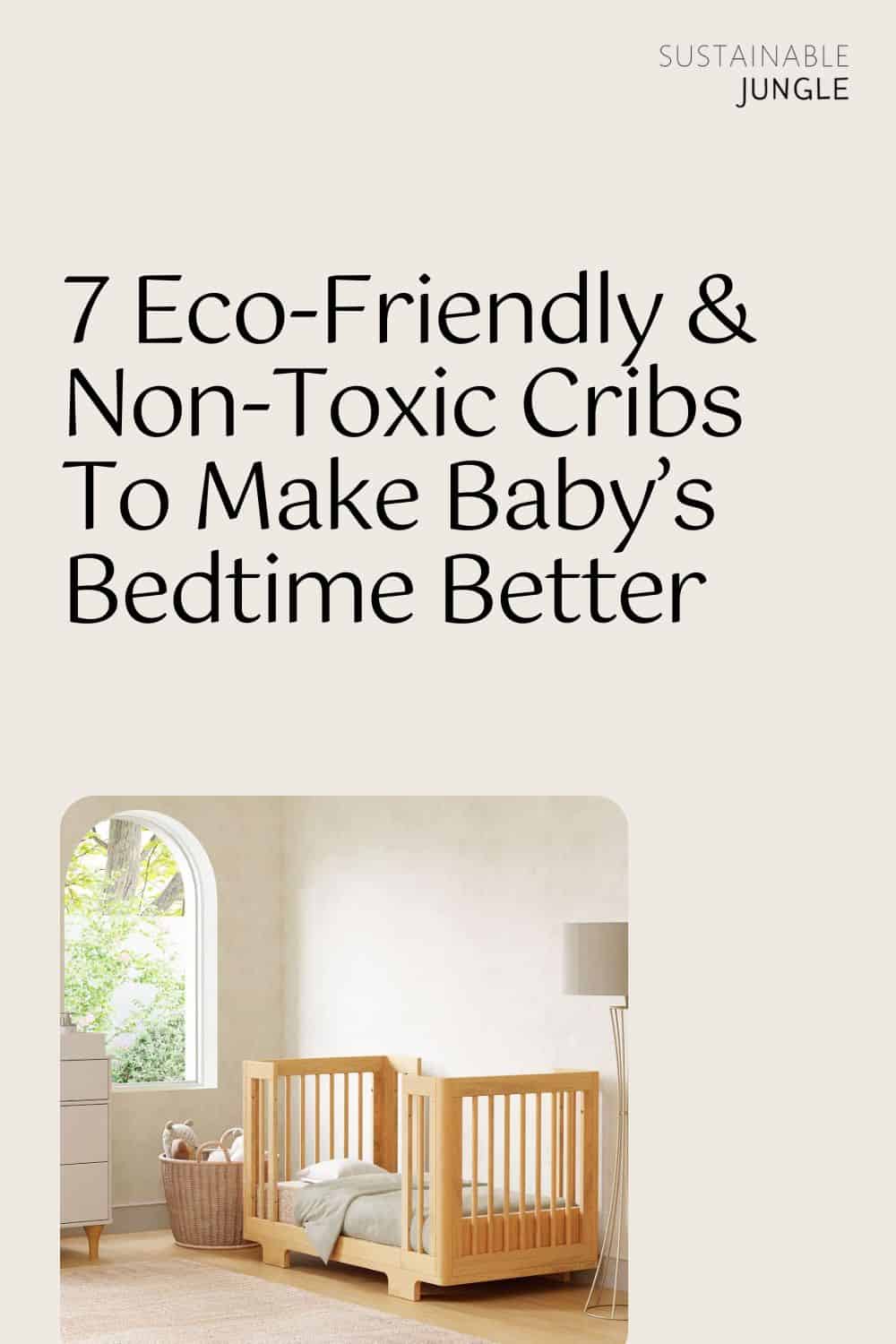
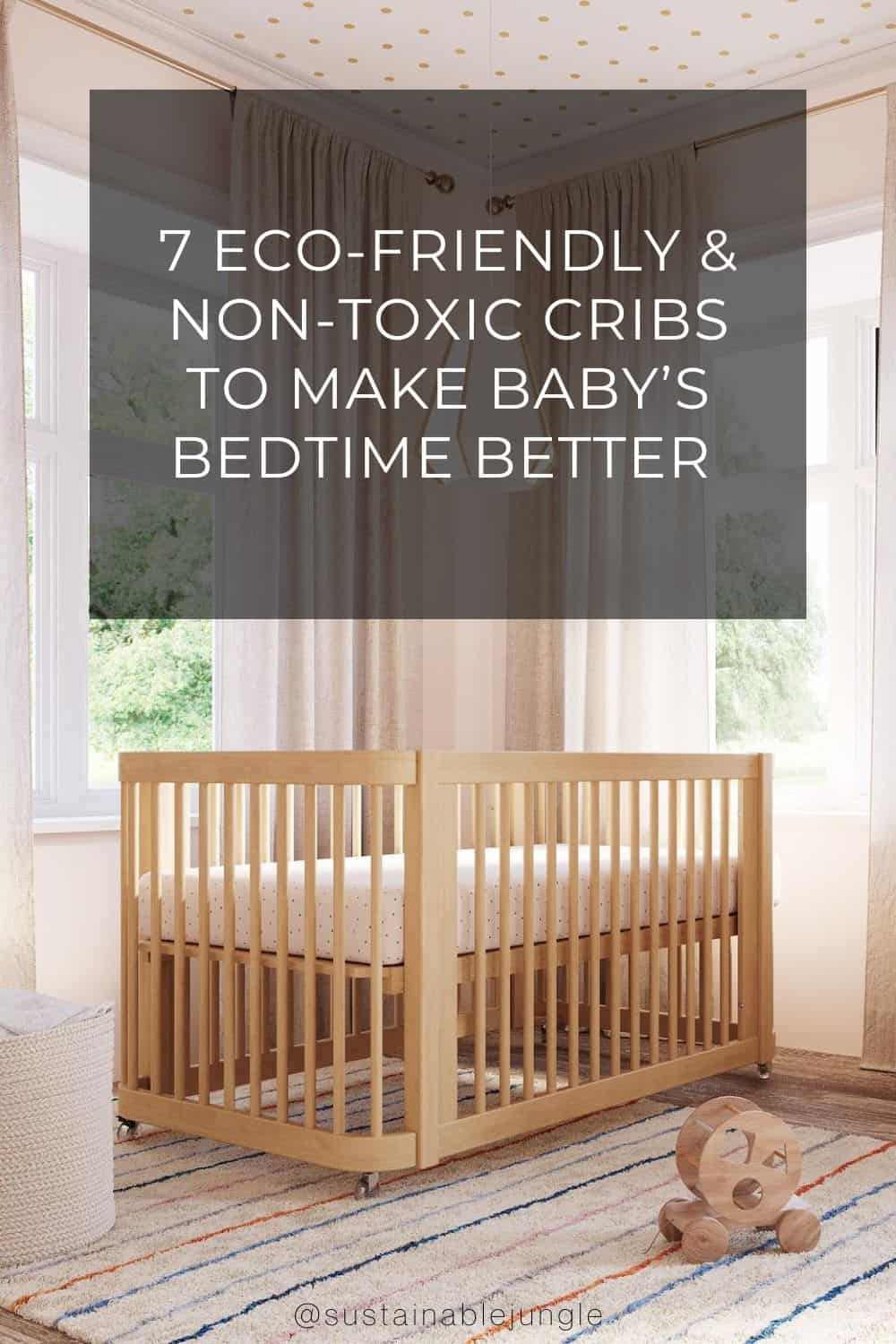

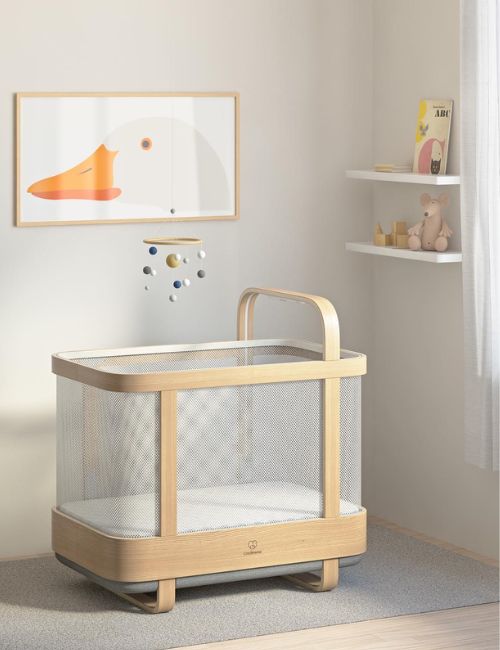
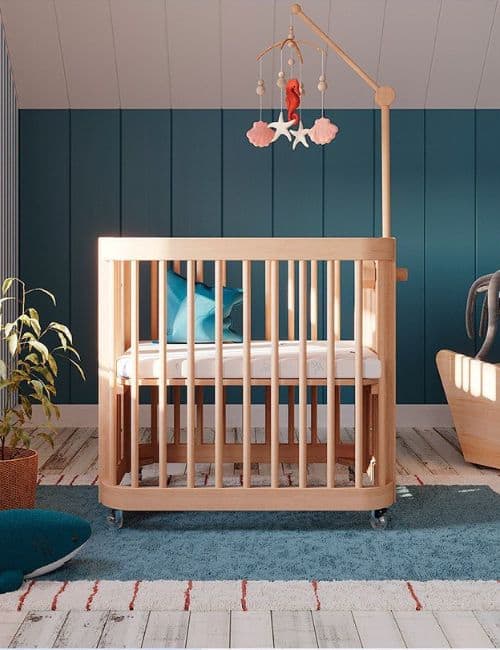
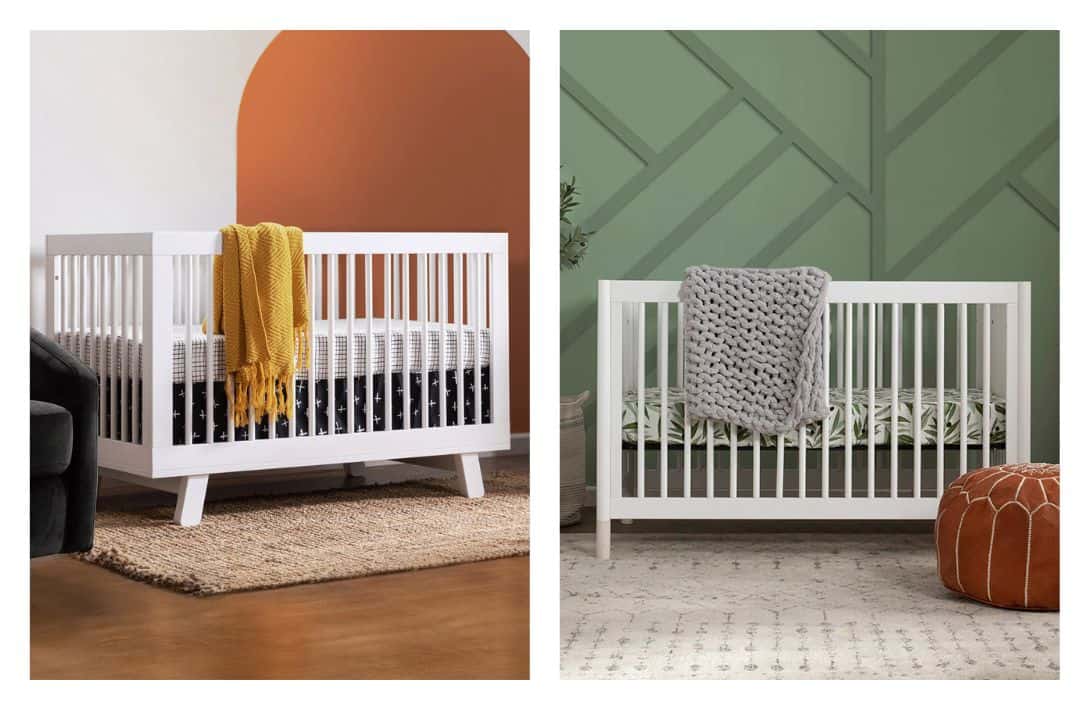
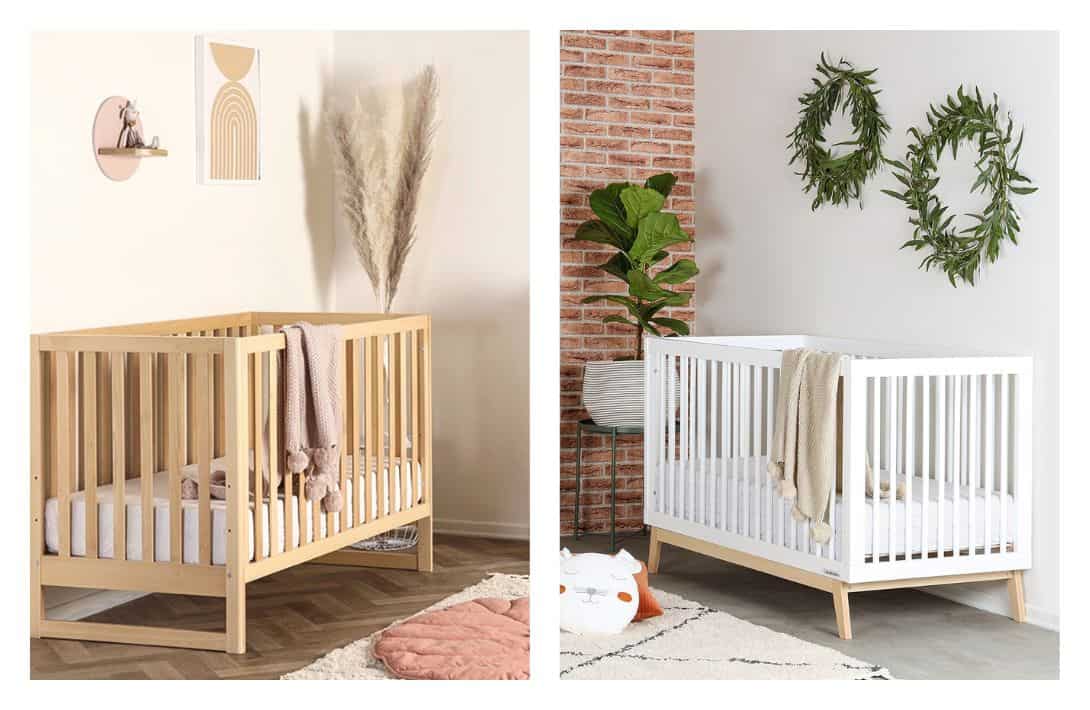
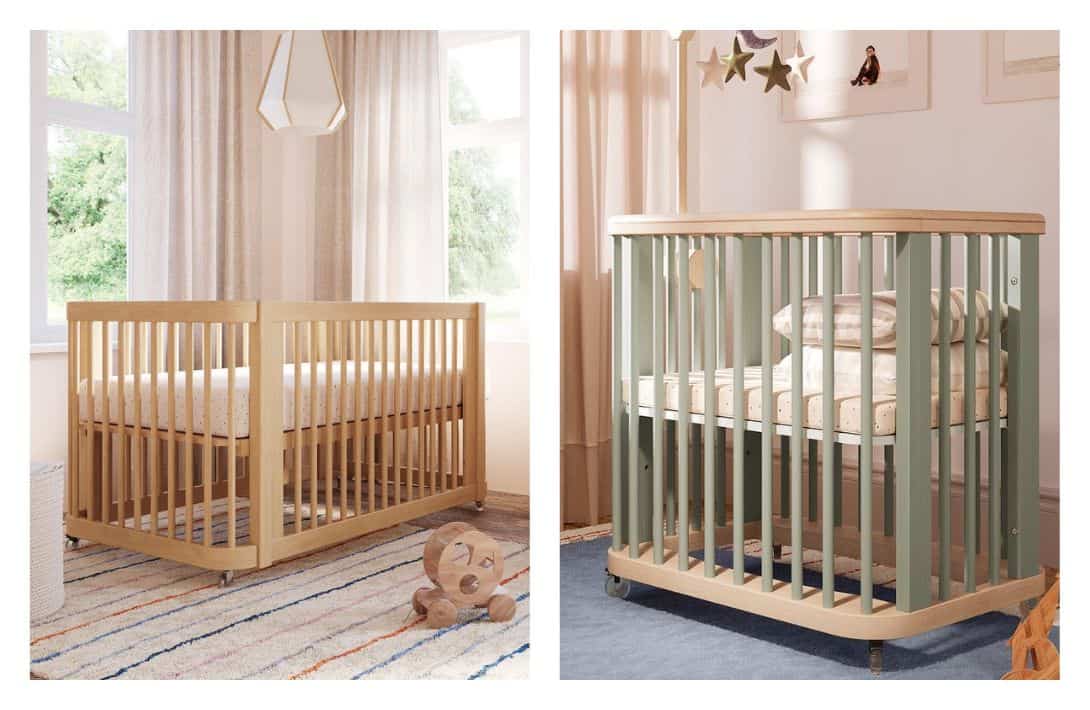
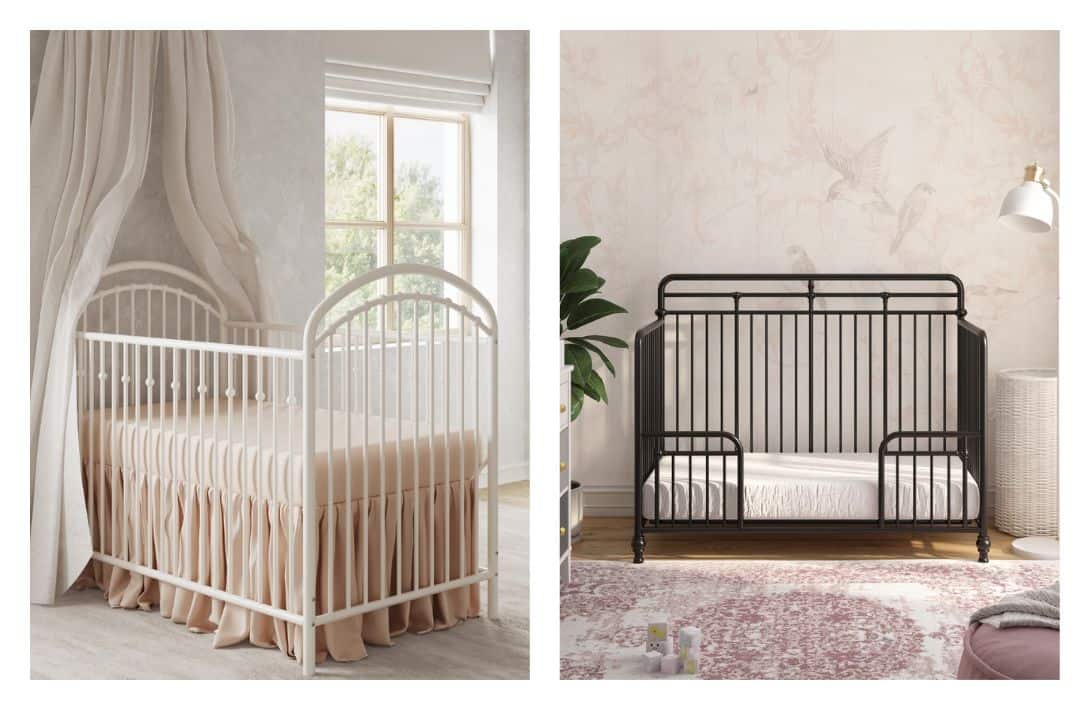
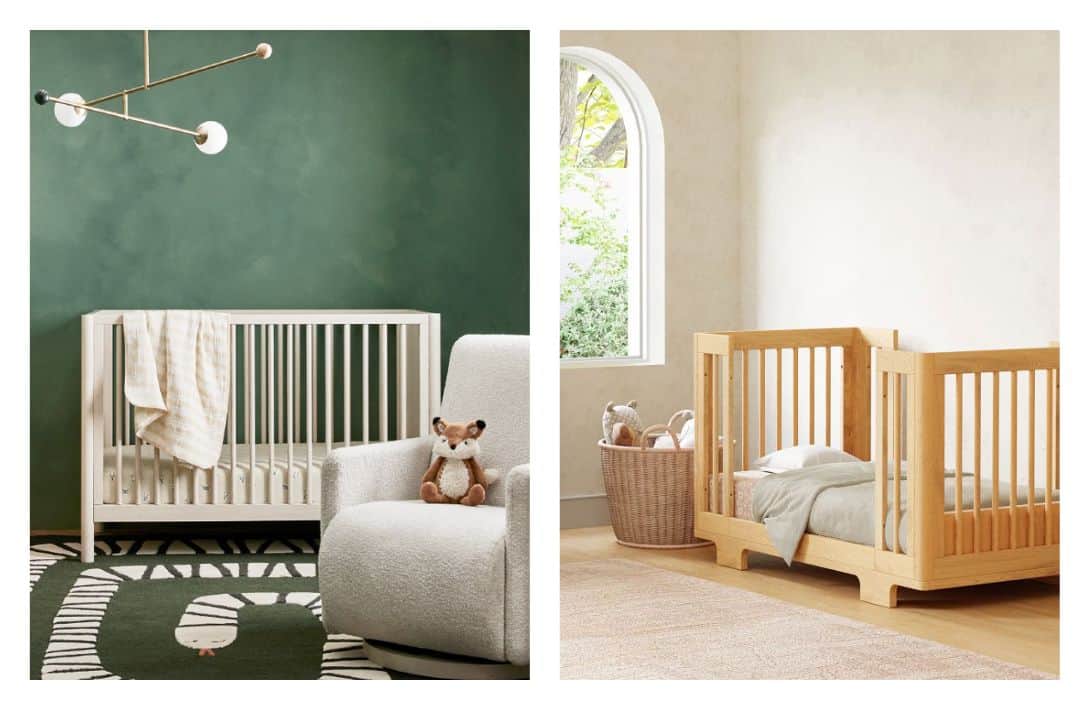
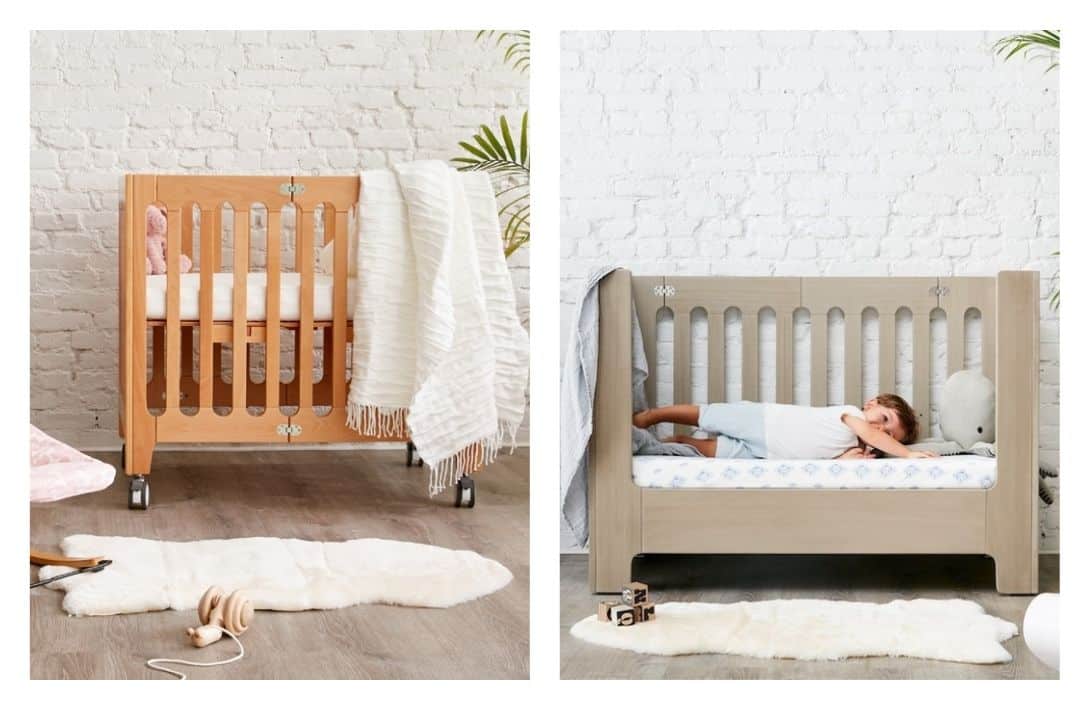
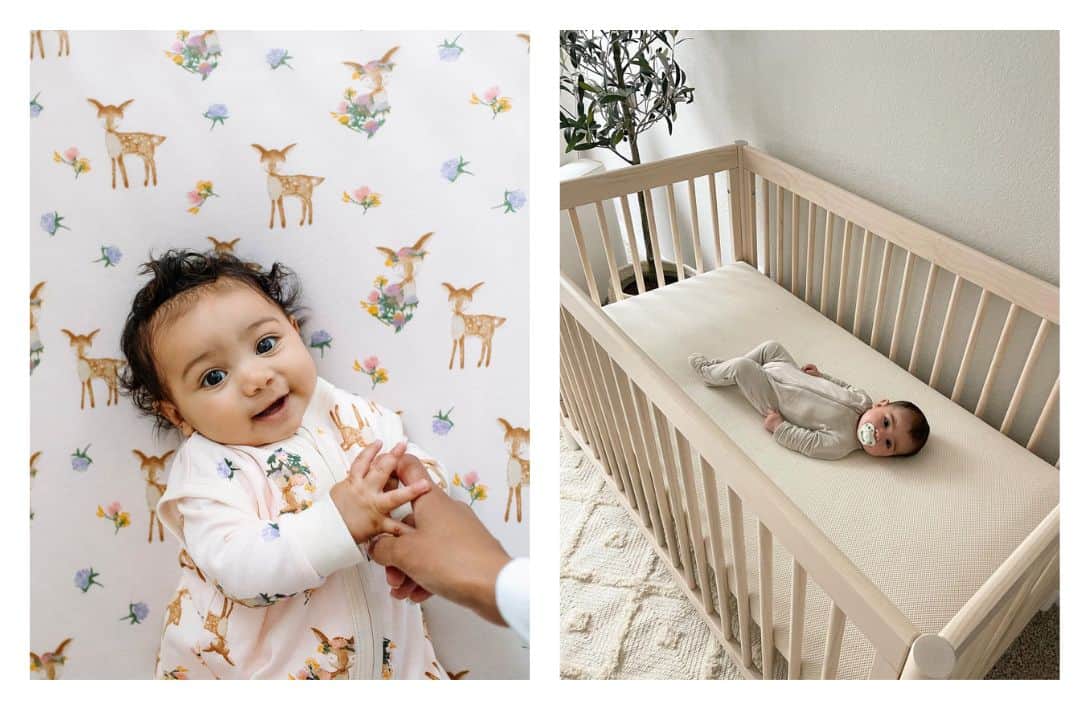
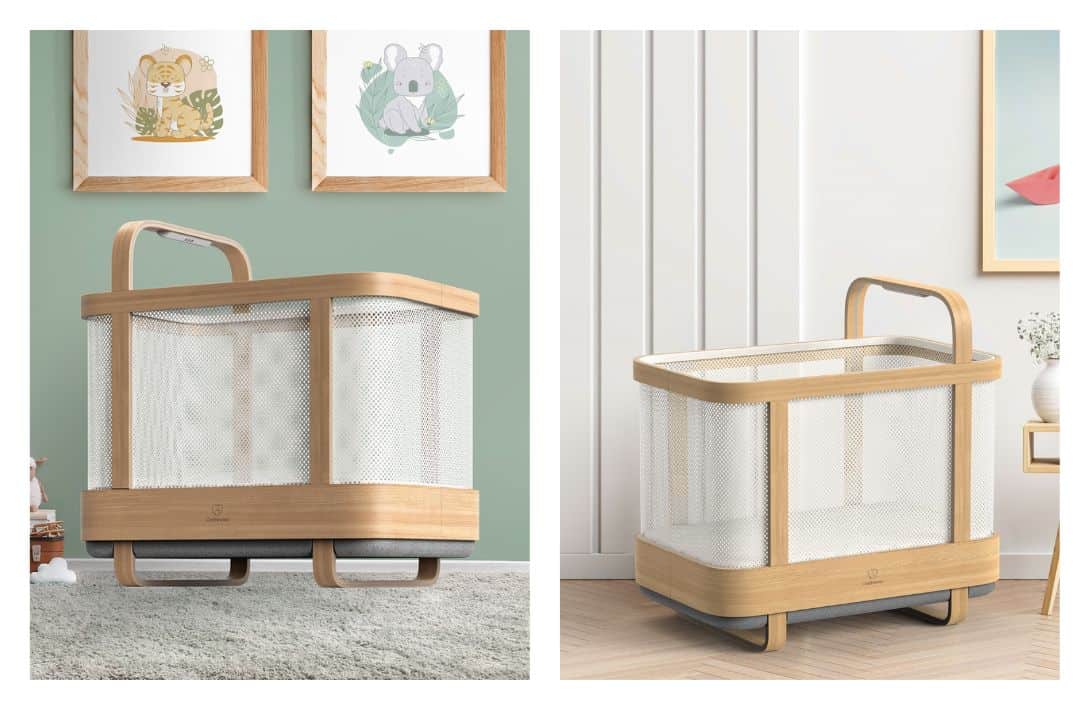
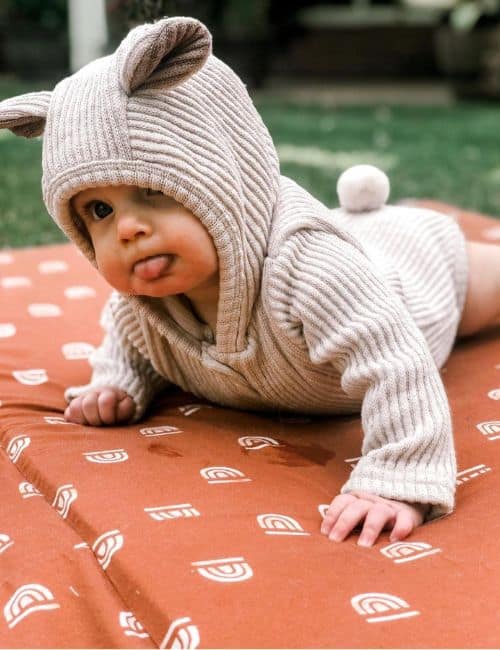

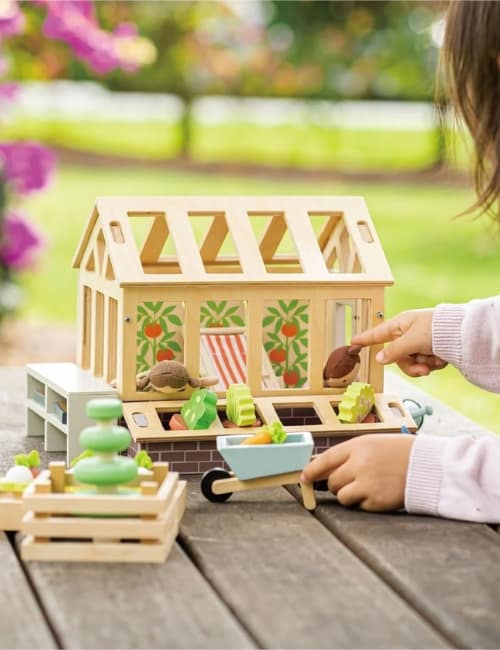
Hi do you know if any of these companies you have listed do dropshipping? Thank you, Alyson Shaff, CEO Be Green Global Baby.
I’m not sure Alyson, I’d suggest reaching out directly.
We would love to see Green Cradle added to this list. We bought our crib from them and they are made here in the USA, with all solid wood. Their focus on green principals is wonderful.